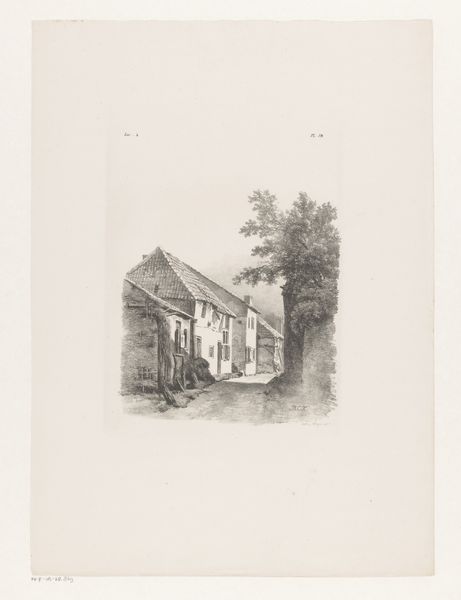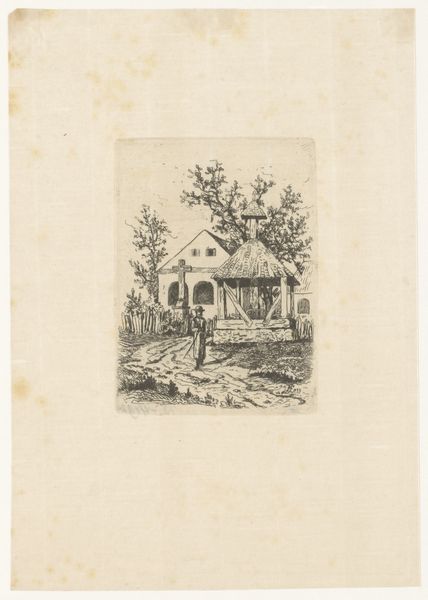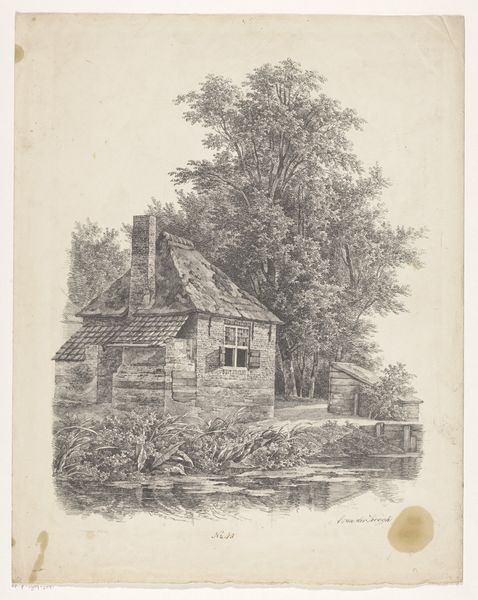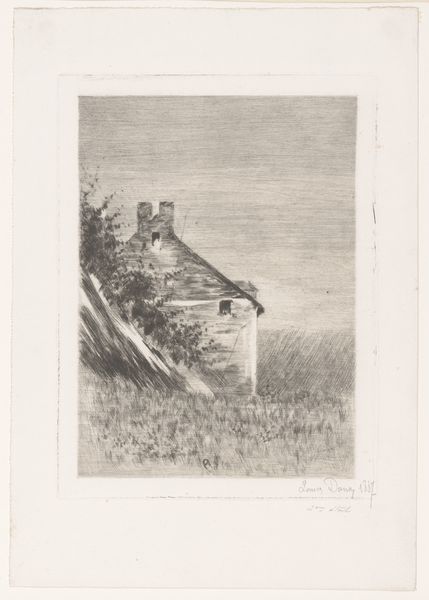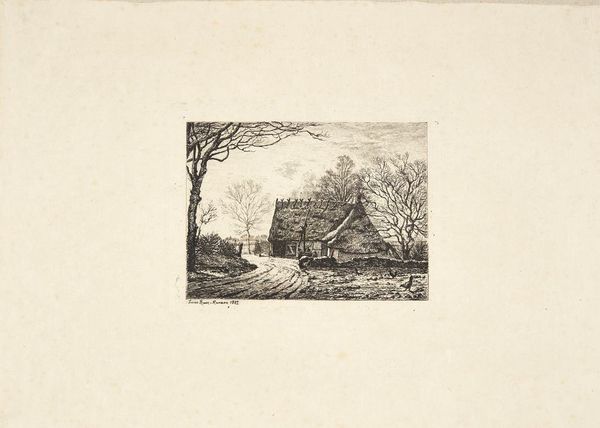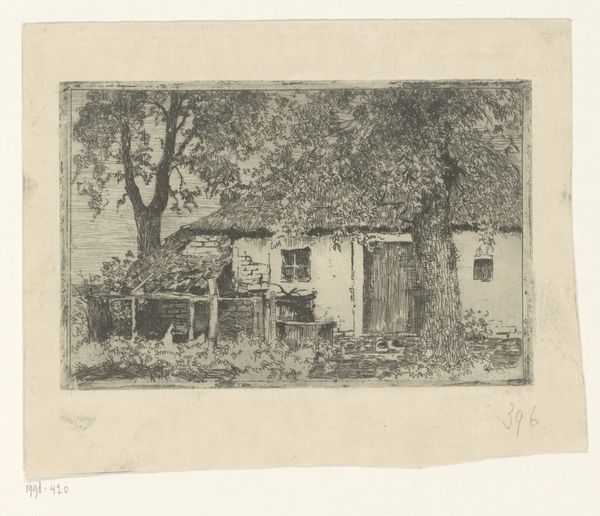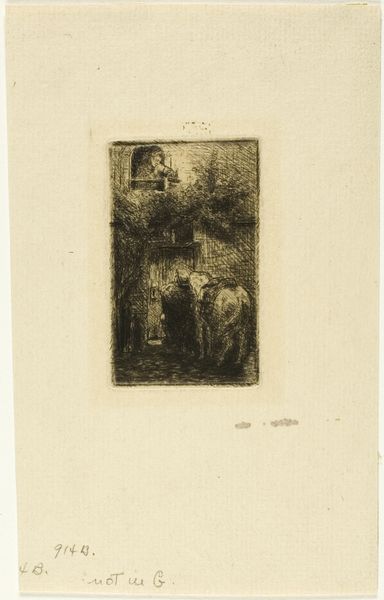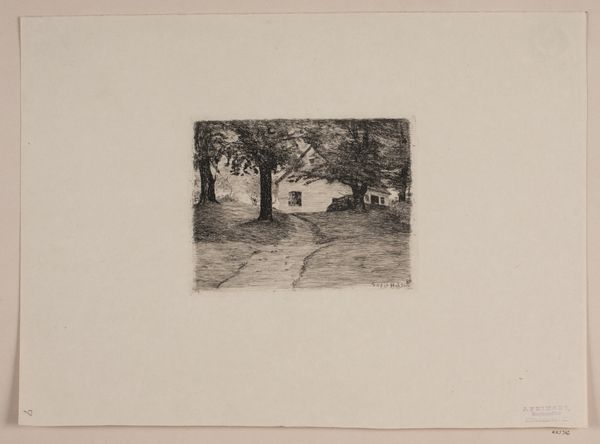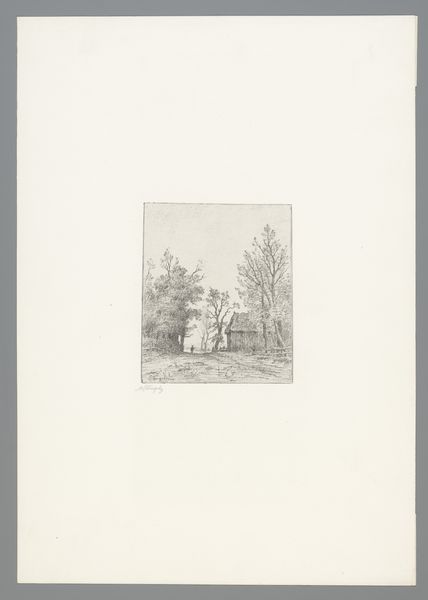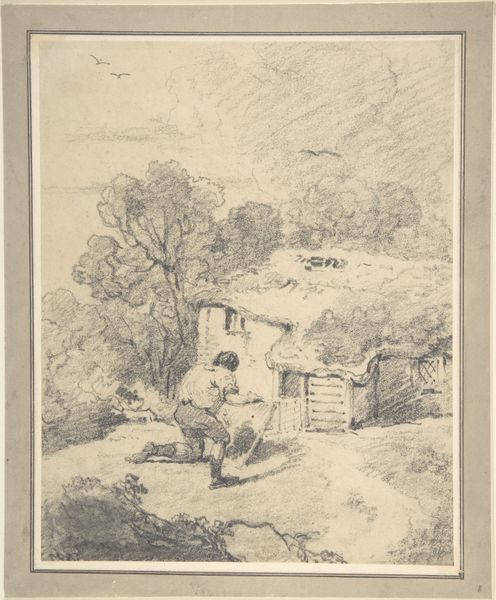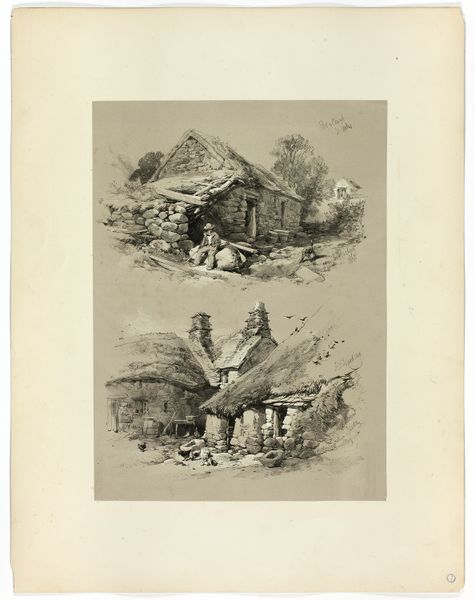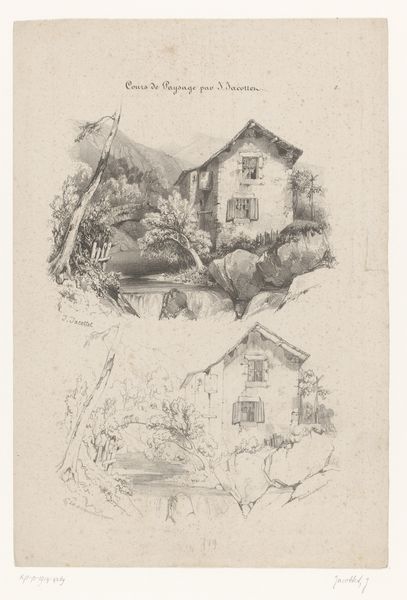
Dimensions: 7 13/16 x 5 3/4 in. (19.84 x 14.61 cm) (plate)17 5/8 x 12 1/8 in. (44.77 x 30.8 cm) (sheet)
Copyright: Public Domain
Editor: Stephen Parrish's etching, "A Street Corner," from the 19th century, presents a captivating scene. It's like a window into the past, where the architecture and even the light feel so different. What grabs me most is how the lines are made using the etching medium itself. What can you tell me about this print? Curator: What's striking to me is how this work mediates the growing gap between ‘high art’ and the labor of printmaking. Etching, typically viewed as a means of reproduction, here becomes a method of unique artistic expression, and this elevation of craft deserves attention. Think about the material process: the copper plate, the acid, the intentional mark-making of the artist. Editor: I see your point about the labor. How does understanding the process deepen our appreciation? Curator: Considering the materials allows us to contemplate its availability and consumption. During this period, printmaking became more accessible due to industrial advances. How did this broader availability affect the perception of prints? Did it challenge traditional notions of artistic value centered around uniqueness and skill? Editor: That's a completely new angle for me! It really changes how I look at this piece, now understanding printmaking not just as replication, but also as innovation with labor in mind. Curator: Exactly. Paying attention to these issues offers new lenses for interpretation. It's crucial to consider how art objects are created, disseminated, and received. It moves us away from pure aesthetics and into the material conditions of art production. Editor: Thanks for opening my eyes to this more material-driven way of seeing. I’ll definitely consider this in my other art studies.
Comments
No comments
Be the first to comment and join the conversation on the ultimate creative platform.
